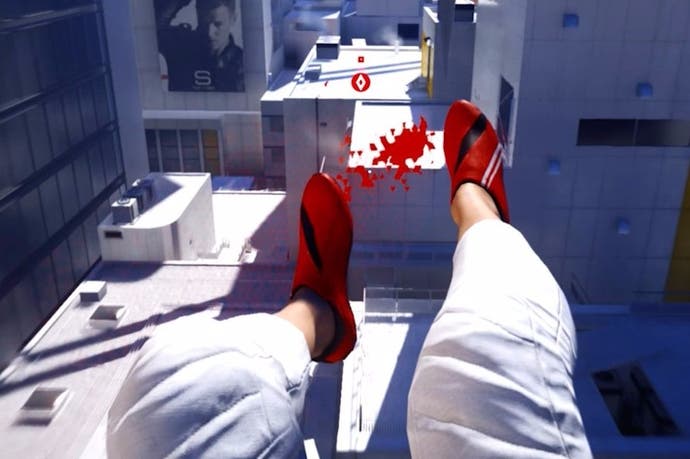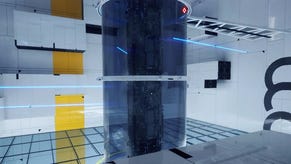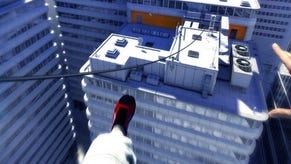The open world of Mirror's Edge Catalyst is barebones in a good way
Finial Fantasy.
I love seeing how open worlds fit together. Done right, they become hugely empowering spaces - you can go anywhere, interact with anyone and do pretty much anything. Most importantly though, you can do all of this at your own pace; Red Dead Redemption was my favourite game of the last console generation because it was such a fantastic world to potter around in, picking up little quests and (cow) poking around with a sometimes glacial tread.
But what happens to the open world when the main purpose of your game is to go fast? How do you build a thriving, expansive city of possibilities when you know players will spend most of their time whipping through it at breakneck speed? If my recent hands-on time with Mirror's Edge Catalyst is anything to go by, DICE has thought carefully about this question and the trick is much the same as making a successful burrito: don't overstuff it.
The open world of Mirror's Edge Catalyst is deliberately barebones. That's not to say it isn't detailed; the City of Glass is undeniably beautiful. By necessity, however, it has to be more upfront about its purpose than, say, Grand Theft Auto 5. Los Santos is a city that functions of its own accord and, in many ways, it doesn't really need you. Every rooftop in the City of Glass, however, is built for free running; helping you find your own path as you cheese it toward the next mission objective. The living, thriving bit of the city is kept at a distance - about forty stories down, actually - contributing to a sense of isolation, but also one of focus. Mirror's Edge Catalyst doesn't bark at you like other open worlds - it just sits back and lets you get on with it.
This utilitarian approach is most immediately apparent when you open up the game map. Looking at the map legend for The Witcher 3 (one of the best open world games of all time), it's stuffed with little tidbits to distract you as you stomp about the place. You've got hidden treasure, dungeons, monster nests, places of power, people in distress, spoils of war, smugglers caches, guarded treasure, abandoned sites, bandit camps and monster dens, all of this before you so much touch a mission or go to a notice board and pick up a witcher contract.
By comparison, the map in Mirror's Edge Catalyst seems positively spartan. You've got missions, dashes and beats (time trials), user generated time trials, a few mandatory collectibles and... that's about it, to be honest. You can construct time trials of your own by setting a starting marker, then dropping checkpoints as you go. It's fairly intuitive, but you can test your run and tweak it as necessary before publishing. These runs will be filtered based on how well other players receive them, with more popular runs rising to the top; you can also generate a link to your course and share it with others via Catalyst's planned companion app. How popular these time trials will prove over time remains to be seen, but for the most part they integrate with the rest of the stuff on the map fairly seamlessly.
Granted I was playing a closed beta and more things may be added for the full release but, for the time being, the City of Glass is impressively free of clutter. It may not be Novigrad, but it's absolutely the right open world for a game like Mirror's Edge Catalyst.
If you want to know a bit more about what it's like to play Mirror's Edge Catalyst and what the story is like, give the video below a watch. Beware, it contains spoilers for the first few hours of the game.
As for building a successful burrito, make sure to get a good tuck on the tortilla at either end. Roll away from you to close the burrito, then roll it toward you to wrap it in foil. It'll stay tight that way.
This article/video is based on a press trip to Stockholm - EA paid for travel and accommodation.











